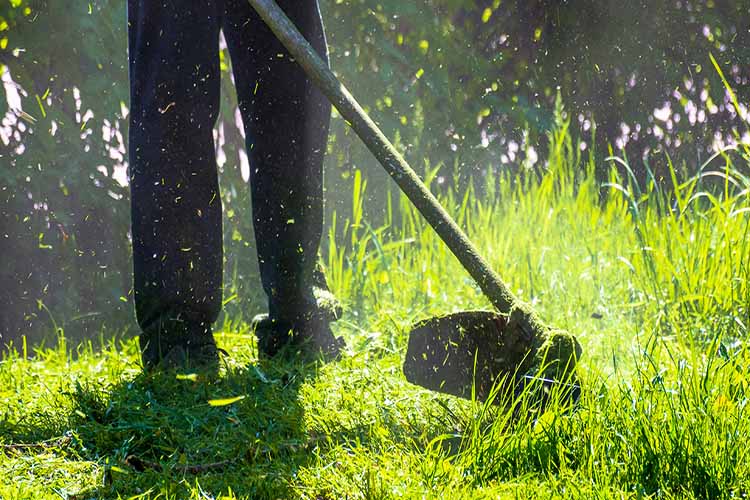Nearly 50% of small businesses fail in the first five years. They don’t typically fail because they don’t fit the market, but because of their own management instead. Most are first-time business owners who don’t have backgrounds in management.
So what’s the real cost of running a business?
Today we’ll look at four facts that can teach you what operating cost is and how to understand it.
4 Facts About Your Lawn Care Business Operating Cost
- Your Operating Cost Isn’t As Clearly Defined As You Think It Is
- Most Companies Don’t Factor In All Their Overhead
- You’re Losing Money Without Even Knowing It
- Job Costing Ensures Profitability
Your Operating Cost Isn’t As Clearly Defined As You Think It Is
According to businessdictionary.com, operating cost is defined as the cost per unit of a product or service or the annual cost incurred on a continuous process. Operating costs do not include capital outlays or the costs incurred in the design and implementation phases of a new process. So for our case study, we’ll be looking at the annual cost of running your business.
First, let’s ask a simple question. What’s your company’s man-hour rate?
You base all of your work on man-hour rate, but are you sure you’ve figured it out accurately for you?
In a recent survey done by Tony Bass Consulting, 70% of the contractors he interviewed had the same man-hour rate of $45 per hour. Your profitability is tied directly to how you manage job costs and figuring out man-hours, so how can it be the same for so many companies?
Most Companies Don’t Factor In All Their Overhead
Operating cost has to be tied into every part of your business, including man-hour rate. The above question might seem like a basic question, but let’s dive in and see how complicated we can make it.
First, you need to pay an employee to cut the yard. Let’s assume that you are paying the employee $15 per hour and the job takes 1 hour to complete. That means you are paying $15 to your employee, right? Well, not quite. Typically labor burden (employer payroll taxes, benefits, vacation, Workers comp, etc.) runs about 50% of the labor rate. So for this employee, it would not inflate to $22.50 for this job.
Don’t forget to pay the receptionist, pay rent, electricity, and the internet. This will probably run you about $5.00 per hour, also anyone that is management (maybe that’s the owner). Now let’s take care of that equipment. Typically equipment for a crew would cost about $10 per hour, including the gas, depreciation, and maintenance.
So far our total costs are growing quickly: $22.50 + $5 + $10 = $37.50
If we are going to grow the company and improve we need to build in a margin of profit and downtime (paying our laborers to clean the shop, drive time, etc.) Typically the goal in the lawn care industry would be to get a 30% profit. That brings us to $48.75. Even if your costs aren’t that expensive (you don’t pay a receptionist, or rent for example), remember that if you grow, you’re probably going to incur some of these costs eventually.
As you can see in this example, we’re slightly above the $45 per hour rate so many were using. And every company will have a different number for their operating cost, expected profit, and average employee wage. A cookie-cutter man-hour rate can leave your profit considerably short.
You’re Losing Money Without Even Knowing It
If there’s one thing we can agree on, it’s that everything changes. From technology to payroll, as the industry changes, so will your operating costs, and so should your man-hour rate.
The Bureau of Labor Statistics indicates that the average U.S. wage increased by 3% between March 2018 and March 2019. I would expect that their report this year will show at least as much of an increase. Do you adjust your prices by 3% each year to cover this growth? Did you take into account all the other increases in operating costs for your business?
Odds are, you’re not increasing the rates for your customers each year, with good reason. But it brings up the point that you need to review those operating costs each year to determine when is the best time to raise prices. Adding employees, upgrading equipment, and even adding customers further away from your regular route will add to your expenses.
So how can you combat these increases each year and understand when to ask your customers to pay more?
The answer is job costing.
Job Costing Ensures Profitability
Job costing is the most effective tool in your arsenal to help you understand where you’re making money. Not all customers, or jobs for that matter, are created equal. Depending on the route, size of the yard, and many other factors, it might be best to stop servicing a customer who isn’t making you a profit and focus more on the ones who are.
Understanding your job costing will also signal to you when it might be time to look at a price increase. We strongly advise against blanket price increases for every customer. Instead, using a job costing report like the one built into CLIPitc, you can easily see which of your customers aren’t meeting your expected profit. That allows you the opportunity to negotiate pricing with just those individuals who are underpaying for your services.
Asking your customers to pay more can be scary. But if you’ve given excellent service and formed a relationship with your customers, they’ll see the value in continuing to use your services, even at a higher rate.
Small increases in your costs, while they might seem insignificant, can lead to substantial losses in profit. Understanding the entire picture when it comes to your businesses operating costs will ensure your profits continue to rise.

